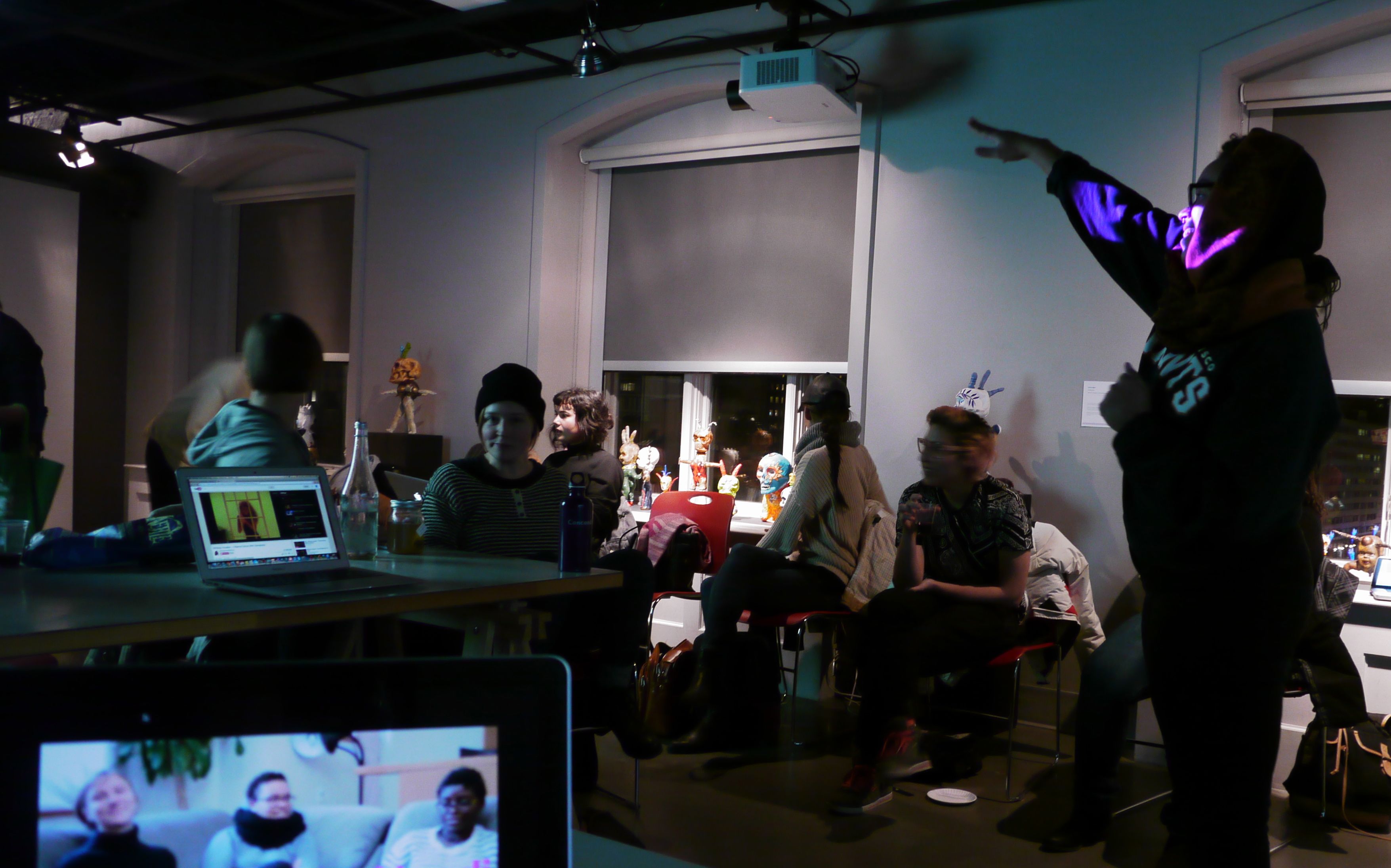
Tracy Zhang on Teaching Anti-Racist Feminist Media

The author of this post, Dr. Tracy Zhang, is Research Associate at Concordia’s Simone de Beauvoir Institute. Tracey and her Anti-Racist Feminist Media WSDB498I course worked with Lex Milton & CEREV’s facilities in the Fall 2014 semester.
During the fall of 2014, I had the privilege of teaching a course, entitled “Anti-racist Feminist Media”, at the Simone de Beauvoir Institute (SdBI). Before the semester started, I had two important encounters that shaped my pedagogical approach to this course. The first was a CBC radio program about a social media campaign, called “Women Against Feminism.” The radio host facilitated a live discussion on the meanings of feminism among a law student, an editor of a feminist magazine, and a freelancer, critical of feminism. I was intrigued by how the mainstream media today is increasingly responsive to social media. Feminist as well as anti-feminist ideas can crisscross the various media spheres that constitute and influence our everyday experiences with sexism and racism. Together with my students, I wished to explore how the class could help translate students’ critiques into audio-visual materials that would allow them to participate in feminist debates beyond the academy.
The second learning experience occurred during my participation in the ninth Encuentro conference, a gathering of performance artists, activists, and researchers. Especially, I encountered several auto-ethnographical research projects in which artist-researchers employed still images, personal narratives, oral history interviews, and videos to expose everyday as well as institutional racism. I was captivated because this approach emphasizes a self-reflexive process of knowledge production, and at the same time allows students to experiment with different research techniques. Thus, I introduced auto-ethnography as a central methodology in my class.
With these good intentions, I confronted some major challenges derived from our institutional setting. First of all, the Simone de Beauvoir Institute does not have any media production facilities. Concordia University’s media production resources are concentrated in such departments as communication studies, film studies, and the journalism school. Students who major in Women’s and Gender Studies do not have direct access to these media labs. It is also true that my students have grown up with the Internet and social media. Most have confidence and great interest in exploring the use of new media technology and software in research, and they are highly motivated to carry out a media project that can express their academic aspirations. In this context, I approached CEREV to look into the possibility of collaboration, which turned out to be very fruitful.
The SdBI and CEREV made an agreement under which my students could access CEREV’s media/exhibition labs as well as receive technical advice not readily available to them on campus. In the end not every student used CEREV’s full services, but all benefited from the collaboration in one way or another. From my perspective, I find our partnership with CEREV re-constituted our classroom setting into a new learning environment; this transformation produced interesting dynamics throughout the semester.
Different activities at CEREV’s media and exhibition spaces changed my students’ routines on campus; consequently affected their interactions with each other. For example, I encouraged students to work together when they edited their media projects. Several students reported that they received advice from their peers in the media lab. In other words, the lab setting plays a role in fostering a collective learning process.
Changes in the learning environment can produce risks. During the first technical workshop, lab director, Lex Milton gave us a tour of CEREV’s media lab. One student panicked and was unable to use the elevator to reach the lab on the 6th floor. (The classroom at the SdBI is on the ground floor.) The security guard shortly arrived and showed us the stairway. I accompanied the student up the stairs to the lab. Meanwhile Lex and the other students continued the tour. In the following weeks, the student, assisted by her classmates, gradually overcame the elevator problem. A trust relationship among students emerged from the mutual support and respect they offered each other.
The last screening party at CEREV’s exhibition center was very meaningful for my students and myself. The layout in the exhibition space and the presence of Lex Milton created the impression of a “public” screening. Several students displayed mixed feelings of anxiety and excitement before showing their media presentations. On the one hand, they recognized that they were producing knowledge not only for a particular audience—their professor—but for their peers as well. Under this circumstance, they felt a greater responsibility for creating and sharing their media products. On the other hand, many presentations contained auto-ethnographical materials, aimed to reveal students’ self-reflexive understandings of the research/media production processes. Several of them experienced some discomfort discussing their research challenges and personal dilemmas in a ‘public’ space. As one student said, she got very anxious about putting ‘herself’ out there.
Generally, the university promotes the creation of ‘safe’ spaces for students to interact and learn. In reality, knowledge production is always context-sensitive and involves complex ethical issues every researcher must wrestle with. Some modifications of the conventional classroom setting as well as practices inevitably disrupt the illusion of ’safety’ in the academy. It is in this sense that I believe our collaboration with CEREV is successful; our students’ final projects speak to CEREV’s mandate: curating ‘difficult’ knowledge. Indeed, my students have not yet confronted a wider audience. They at least gained first-hand experience at CEREV of disseminating their ideas.
Tracy Zhang teaches at the Simone de Beauvoir Institute, Concordia University and currently holds a postdoctoral fellowship at the Centre d’études et de recherches internationales, University of Montreal. Her research engages with critical media studies and feminist political economy, focusing especially on media/cultural workers’ experiences of contemporary political-economic transformations. Tracy’s on-going research project examines Chinese acrobatics as both an institution and a cultural medium, which has evolved from a popular entertainment to a socialist performing art, and finally to one of China’s most profitable cultural exports.


